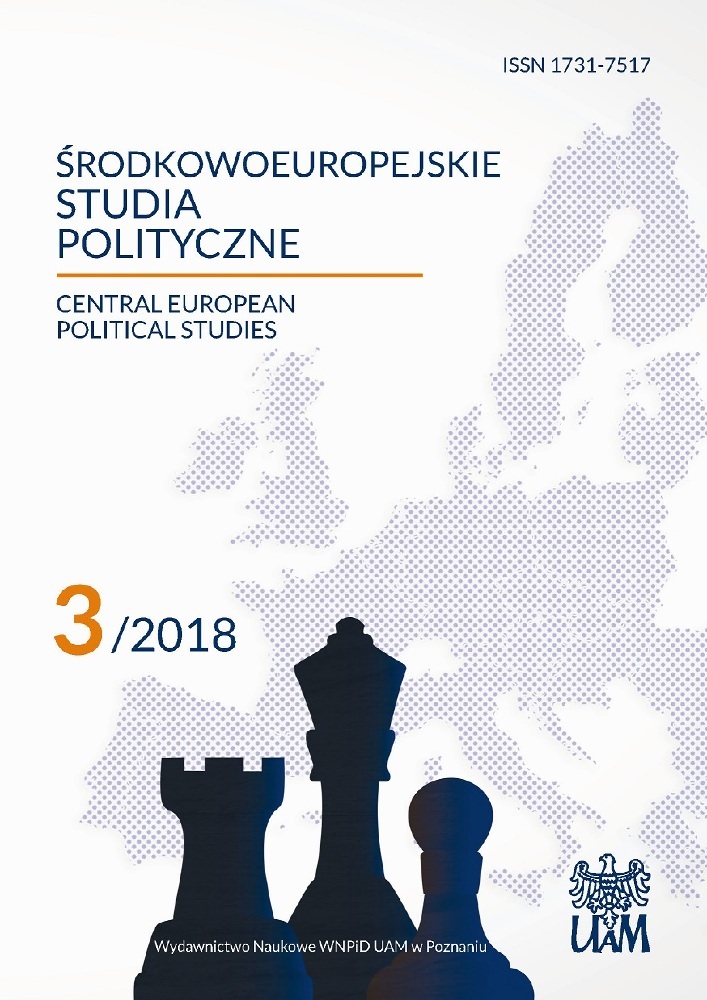Abstract
Intercultural research in the area of communication was initiated in the early 20th century. Over the last few decades, researchers have built a solid theoretical basis in this field. Nowadays, intercultural analyses include a rich collection of texts on cross-cultural differences, the specificity of the phenomenon in the area of verbal and non-verbal communication and also the role of the media. There is no doubt that in an era of dynamic transformations of media use by people all over the world, the sub-discipline of intercultural communication is facing another challenge – that of including social media and network communication processes into new empirical theories and research. The article answers the question of the status of communication research in the field of the intercultural contexts of the new media. Additionally, the directions of future development of these studies and conclusions are discussed.
References
Allwood J. (1985), Intercultural Communication, “Papers in Anthropological Linguistics”, vol. 12.
Brooks A. (2014), Popular Culture: Global Intercultural Perspectives, New York.
Casmir F. L. (1978), Intercultural and international communication, Washington.
Casmir F. L. (1997), Ethics in intercultural and international communication, Mahwah.
Chen G. M. (2000), Global communication via Internet: An educational application, in: Communication and global society, eds. G. M. Chen, W. J. Starosta, New York.
Chen G. M., Dai X-d. (2012), New media and asymmetry in cultural identity negotiation, in: New media and intercultural communication: Identity, community and politics, eds. P. H. Cheong, J. N. Martin, L. Macfadyen, New York.
Chen W. (2010), Internet-usage patterns of immigrants in the process of intercultural adaptation, “Cyberpsychology, Behavior, and Social Networking,” vol. 13.
Chun D. M. (2011), Developing intercultural communicative competence through online exchanges. “CALICO Journal,” vol. 28.
Clothier I. M. (2010), Created identities: Hybrid cultures and the internet, “Convergence: The Journal of Research into New Media Technologies,” vol. 11(4).
Croucher S. M. (2011), Social networking and cultural adaptation: A theoretical model, “Journal of International and Intercultural Communication,” vol. 4.
Croucher S. M., Cronn-Mills D. (2011), Religious misperceptions: The case of Muslims and Christians in France and Britain, New York.
Ekman P., Friesen W. (1978), Facial Action Coding System: A Technique for the Measurement of Facial Movement, Palo Alto.
Hall E. T. (1976), Beyond Culture, Anchor Books.
Hoffmann G. (1991), Racial Stereotyping in the News: Some General Semantics Alternatives, “ETC: A Review of General Semantics,” vol. 48.
Hofstede G. (2001), Culture’s Consequences: comparing values, behaviors, institutions, and organizations across nations (2nd ed.), Thousand Oaks.
Hofstede G., Hofstede J. (2005), Cultures and organizations: software of the mind (Revised and expanded 2nd ed.), New York.
Hopkins L. (2008), Muslim Turks and anti-Muslim discourse: The effects of media constructions of ‘Islamic’ and ‘Arabic’ in Australia, “Australian Journal of Communication,” vol. 35.
Hopson M., Hart T. B., Bell G. C. (2012), Meeting in the middle: Fred L. Casmir’s contributions to the field of intercultural communication, “Communication Studies.”
Kim Y. Y. (1988), Communication and cross-cultural adaptation: An integrative theory, Philadelphia.
Kim Y. Y. (2001), Becoming intercultural: An integrative theory of communication and cross-cultural adaptation, Thousand Oaks.
Kim Y., Sohn D., Choi S. M. (2001), Cultural difference in motivations for using social network sites: A comparative study of American and Korean college students, “Computers in Human Behavior,” vol. 27(1).
Marchis I., Ciascai L., Saial J. (2008), Developing Intercultural Competencies Using Activities with Different Media, “Acta Didactica Napocensia,” vol. 1.
Mou Y., Peng W. (2009), Gender and Racial Stereotypes in Popular Video Games, in: Handbook of Research on Effective Electronic Gaming in Education, Concordia.
Oh D. (2012), Mediating the boundaries: Second-generation Korean American adolescents’ use of transnational Korean media as markers of social boundaries, “International Communication Gazette,” vol. 74.
Özüorçun F. (2013), The importance of body language in intercultural communications, “EUL Journal of Social Sciences.”
Penas I. B., López Sáenz M. C. (2006), Interculturalism: Between Identity and Diversity, Bern.
Pfister D. S., Soliz J. (2011), (Re)Conceptualizing Intercultural Communication in a Networked Society, “Journal of International and Intercultural Communication.”
Shuter R. (2012), Intercultural New Media Studies: The Next Frontier in Intercultural Communication, “Journal of Intercultural Communication Research.”
Soliz J., Pfister D. S. (2011), (Re)Conceptualizing Intercultural Communication in a Networked Society, “Journal of International and Intercultural Communication,” vol. 4.
Zhang Y. (2005), Stereotypes of and Discrimination Against Racial/Ethnic Minorities: Can Media Exposure Help Change People’s Racial/Ethnic Prejudice for the Better or for the Worse?, Washington.
Internet Resources
Arbel N., Third Culture Kids, https://spinstrangenesscharm.wordpress.com/2010/11/27/third-culture-kids/.
Behr A., Marvin R., The Best Social Media Management & Analytics Tools of 2016, http://www.pcmag.com/article2/0,2817,2491376,00.asp.
Crawford J., Media, Stereotypes and the Perpetuation of Racism in Canada, Occasional Papers in Educational Technology (University of Saskatchewan, May 1998), http://etad.usask.ca/802papers/crawford/crawford.PDF.
In 2015 2.5 Quintillion bytes of data are created every day, http://www.vcloudnews.com/every-day-big-data-statistics-2-5-quintillion-bytes-of-data-created-daily/.
Mobile Is the New First Screen, https://www.oracle.com/assets/mobile-infographic-2595872.pdf.
Sawyer R., The Impact of New Social Media on Intercultural Adaptation, http://digitalcommons.uri.edu/cgi/viewcontent.cgi?article=1230&context=srhonorsprog.
Rosen D., Stefanone M. A., Lackaff D., Online and offline social networks: Investigating culturally-specific behavior and satisfaction, http://www.informatik.uni-trier.de/~ley/db/conf/hicss/hicss2010.html.

